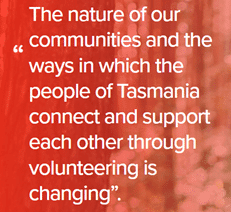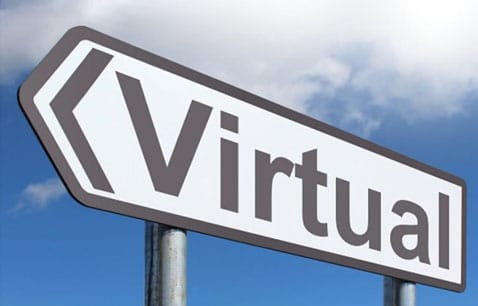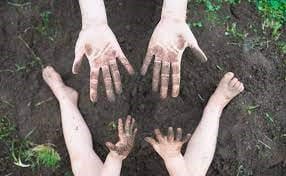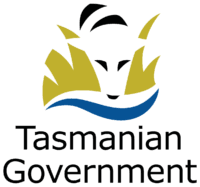The Innovation Series is focused on sharing interesting information that’ll get you thinking differently about the volunteering sector and how we do things. We’re sharing thought provoking topics that get you reimagining how volunteering can be delivered.
COVID-19 has meant many organisations have needed to adapt and change practices and this has led to innovation. Some of the changes were for the better and we’re still doing them today. The Innovation Series highlights the great things happening across the volunteering sector that support different ways of working – locally, national, and internationally.
On this page we will share ideas about different ways of working for the future of volunteering.
Get exploring the content below!
Well-being
 We’d like to talk about supporting the well-being and mental health of volunteers. It is a massive topic and one that keeps popping up in our consultations.
We’d like to talk about supporting the well-being and mental health of volunteers. It is a massive topic and one that keeps popping up in our consultations.
The COVID-19 pandemic has left everyone affected in some way, through isolation, sickness, restrictions and more. It has become more important than ever to recognise the health and well-being of those we work with, and support.
Listen
- Listen to this wonderful podcast on Putting Volunteer Wellness First by Time + Talent
Watch
- This video shows a great example of improving well-being through Bring your pet to work day
Read
We know that volunteering can have a positive impact on a volunteer’s mental health. It can bring meaning and purpose to one’s life and provide social connection. We also know that many volunteers have been stood down and unable to engage since the COVID-19 pandemic and nationally, there is a rise in people accessing mental health services.
Want to read more?
Act
Below are some resources to help you to start putting into action some ways to improve the health and well-being of your volunteers:
Connection
 Let’s talk about connection. How, when, and why we connect with our volunteers can define the community that we create.
Let’s talk about connection. How, when, and why we connect with our volunteers can define the community that we create.
The COVID-19 pandemic threw everything we understood about connecting with volunteers up in the air. It became apparent that to remain connected, we needed to be flexible, adapt and think differently about interacting with volunteers.
Listen
- Have a listen to Sarah De Jong’s talk on Radio National about the 1000 hearts project.
Watch
- This video of Ok Go’s ‘All together now’ during the COVID-19 pandemic, brings together how strong our need for connection is as humans.
- Watch this video about Words with Friends, and how an old idea brings fresh connections.
- Rethinking the way we do things helped the Vertical Concert create an experience like no other.
- Opportunities to share is the foundation for the Big Lunch: Virtual and Face to Face and its connection to communities.
- The guru of gathering, Priya Parker as some insights here on Making online meetings meaningful.
Read
As humans and primates, we are fundamentally social beings. We require connection for so many things in life and research shows that connection is fundamental for a good life. A strong social network or community makes us more resilient in times of need and supports positive well-being.
However, the impacts of COVID-19 over the past two years have changed the way we connect. COVID-19 has made us rethink and get creative in the way we connect with each other, including the way we connect with volunteers.
During lockdown, many organisations explored different ways of connecting with their volunteers. Online connection was thrust upon us, but people got creative in making this fun. Some groups held online games, competitions, and activities. Others tried more traditional connection by sending handwritten letters, calling people and delivering care packages.
Act
Feeling inspired to do something?
Design Thinking
 We know that the future of volunteering is changing. Without bold leadership and a chance to challenge and trial different ways of working, we won’t see the adaptation needed to thrive in this changing environment.
We know that the future of volunteering is changing. Without bold leadership and a chance to challenge and trial different ways of working, we won’t see the adaptation needed to thrive in this changing environment.
Design thinking is a process for solving problems that can help leaders in the volunteering sector to be daring in their actions, learn and grow from failure and build solutions through rapid prototyping and person-centred design.
This iterative and non-linear process can embed resilience in organisations by supporting people to approach challenges and problems differently through an action learning process. Design thinking can help volunteer organisations to adapt their operations after COVID-19, to effectively recruit, support and manage a more flexible workforce.
Listen
Watch
Read
Infographic source: https://www.bbva.com/en/can-world-banking-learn-design-thinking/
Innovation
We’ve been talking about the future of volunteering a lot. We know that in Tasmania, like the rest of the world, we’re seeing rapid changes to the volunteering sector. Changes in the way people want to volunteer, to technology and to the way we need to support volunteers.
 We are also seeing declining volunteer rates and if we continue on the same trajectory, data projections show will have a 42% gap in the supply of volunteers and the demand for volunteers by 2029 in Tasmania.
We are also seeing declining volunteer rates and if we continue on the same trajectory, data projections show will have a 42% gap in the supply of volunteers and the demand for volunteers by 2029 in Tasmania.
So we need to think differently about how we address some of the challenges we’re faced with.
The Australian Volunteers Program has been doing just that. They have developed an Innovation Fund to make time to find and trial different ways of doing things to improve their programs. This has meant thinking outside of the box and learning from some key innovators like NASA.
One of the early programs they’ve adopted is a remote volunteering initiative. Have you thought about innovating?
Read
Diversity and Inclusion
 Have you thought about diversity and inclusion in your volunteer programs lately?
Have you thought about diversity and inclusion in your volunteer programs lately?
During the COVID –19 pandemic, some people were no longer able to volunteer, while others were motivated to start.
It has also meant increased access to diversity globally and broadening the goalposts for what it means to be inclusive. So, how do we ensure that those who want to, feel welcome and can volunteer with us?
Listen
Watch
- Watch our Diversity and Inclusion workshop here.
Read
Why should we care about diversity? The world is more transient and available than ever, if not physically, then through the online world. This means people from all walks of life have access to your group/organisation. But access doesn’t inherently mean inclusion. Without inclusion, you miss out on innovation, creativity, and the sustainability that diversity brings within a group. So, what can we do to increase diversity and reap the many benefits?
- Recognise and celebrate diversity days e.g. International Day of People with Disability, Wear it Purple Day, NAIDOC week
- Make it visible – through art, music or books in your groups space.
- Encourage and provide space for storytelling between volunteers, or from outside groups to build trust.
Want to read more?
Act
Below are some helpful resources to act on improving diversity and inclusion:
Virtual Volunteering
How can the online world support your volunteer program?
 In the 2019 State of Volunteering Report, we saw an increase in people volunteering online. Since the COVID–19 pandemic this increase has sped up – online has felt like a haven for those who want to continue to contribute to their communities but were unable to leave their houses. As we see a rise in volunteers turning to the online world for opportunities, how do we make the most of this movement?
In the 2019 State of Volunteering Report, we saw an increase in people volunteering online. Since the COVID–19 pandemic this increase has sped up – online has felt like a haven for those who want to continue to contribute to their communities but were unable to leave their houses. As we see a rise in volunteers turning to the online world for opportunities, how do we make the most of this movement?
Read
Is virtual volunteering on your radar?
The last two years has seen the volunteering landscape transform worldwide. The face of volunteering has changed, opening local communities to global volunteering through digital mediums. These changes can increase sustainability of programs as technology, population, and climate continues to shift the landscape.
The online world can harness our communities in diverse ways and open new opportunities. The Virtual Village was created to ensure people could access peer support regardless of the isolation, allowing a community of a different sort to grow. DigiVol at the Australian Museum, saw a surge of involvement from people all over the world during COVID to come with them online, transcribing expedition findings. As COVID throws up physical barriers, technology opens us to opportunities to not just move around barriers but create whole new paths.
Want to read more?
Act
Below are some helpful resources to start virtual volunteering:
Partnerships

As humans, we are dependent on social connections for our health and well-being – we need others to thrive in the world.
We do better with others involved. Volunteering is no different and partnerships are key to strengthening our programs, impact and longevity. There are many great examples of how innovative partnerships have led to significant outcomes for volunteer programs and the people involved.
Watch
- Have a look at how intergenerational partnerships can support deep community connections with each other.
- Watch this video on the long term relationship between Coca-Cola and Landcare and the impact it has had.
- Chris Jarvis shows us how corporate volunteering partnerships support organisations and individuals.
Read
Need a smile? Google ‘unlikely friends’. You will find animals you wouldn’t have guessed could coexist. A cat and a mouse? A hippo and a tortoise? While heart-warming, these hold a significant message – that the strength of social bonds support our survival.
It is such an important message that it turns up in the United Nations 17 Sustainable Development Goals. Goal 17: Partnerships for the Goals. We can only realise these goals for our survival by creating partnerships with others. Those partnerships need to span different backgrounds, cultures, and locations if we hope them to be truly sustainable.
The theme for National Volunteer Week 2022 was Better Together. A focus on how essential our volunteers are to strengthening social bonds for our survival. In knowing this, our communities are exploring their unlikely friendships: schools that collocate with aged care facilities, and clothing brands that partner with peak bodies.
These unlikely combinations create mutual sustainability for the betterment of their communities.
So, where could you look for your partnership to build sustainability? Where is your unlikely friendship?
Want to read more?
Act
Below is a helpful resource to explore sustainability activities:
Here are some different ways to look at your volunteer program
Volunteer Experience
 Imagine seeing a social media post that shows a secluded, quiet beach.
Imagine seeing a social media post that shows a secluded, quiet beach.
The water is pristine turquoise, and the sky a brilliant blue. Then you go to the beach to experience this opportunity for peace only to find overwhelming crowds of people. As humans, we build up expectations about what we will experience from the people around us. These expectations provide a pre-experience picture that can either be supported, built on or let down.
When looking for new volunteers have you heard, ‘I’m worried I will be roped into more than I can do?’, ‘I’m not sure what I can contribute’ or ‘I don’t have much time.’ Finding new volunteers and then retaining them requires managing and meeting expectations. Having clear expectations of what you are wanting, helps alleviate any concerns volunteers, or funders may have about getting involved.
Listen
- Listen to Bo Goliber discuss practical ways to tap into corporate volunteering through managing expectations on Volunteer Plain Talk.
Read
So how can you meet expectations and manage the experience of your volunteers? How about looking at the spaces your volunteers occupy in your organisation. Are they welcoming? Are they clear?
Read more here:
The ‘green room’ is the name given to the space for performers before they go on stage. This room is painted green and is done, it is said, to promote calm and focus. The spaces we occupy inform and support us to carry out our necessary activities. We have benches in kitchens, so we can move as we mix and create, we have couches in lounge rooms where we wind down and in board rooms, one big table with chairs lining it to create focused and structured conversation.
What sort of spaces do you provide for your volunteers?
Do volunteers involved in your program / group / organisation have a space where they can meet? Is it open, does it maximise interaction, and can it vary? How can the space you are in, support innovation?
Act
Below are some helpful resources to start looking at the volunteering experience:

This program has been funded by the State Government.